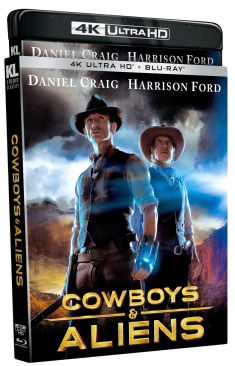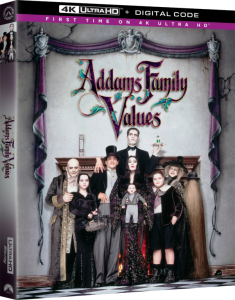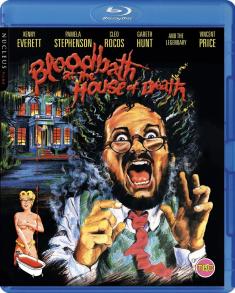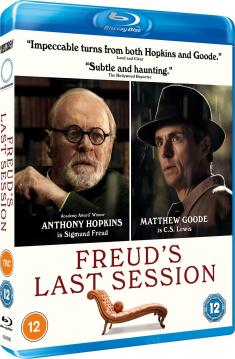Epson Home Cinema 5050UB 4K PRO-UHD Projector Review
Overview -Overview -- With 2600 lumens of brightness for both white light and colors, the 5050UB 4K PRO-UHD Projector is the first Epson Home Cinema series projector to offer 4K/60p playback along with HDR10, a 1,000,000:1 contrast ratio, and a 100% DCI P3 color space reproduction. This projector may not be a true 4K device, but its excellent optics, sumptuous colors, immersive 3D, and strong contrast make it a very impressive machine overall and Highly Recommended for anyone looking for a projector solution that doesn't cost as much as JVC and Sony's offerings.
INTRO
Let's get two big things out of the way upfront. Yes, Epson's current Home and Pro Cinema Projectors don't display 8 million pixels despite 4K/60p HDR10 compatibility and "4K UHD" in the product name. Their systems still use a diagonal pixel-shifting technology that reveals approximately 4 million pixels on your screen. It's effectively Full HD x 2.
I know this ruffles a few feathers, but here's the honest truth: Epson's pixel-shifting projectors (the 4050 and above) outperform every single native 4K projector I've tested under $3,000. Why? Most of them are DLP projectors and, while they project 8M pixels from native 4K chips, they have mediocre colors, poor contrast, and their optics -- the physical glass -- are cheap. Which makes sense, of course, they're, generally speaking, budget projectors.
In short, the Epson 5050UB may not be a true 4K device, but its strengths outweigh the cons by a significant margin.
The other thing we should chat about, briefly, is the 4K TVs versus PROJECTORS debate. Projectors like the Epson 5050UB don't have the same image quality as an LG OLED or VIZIO P Series Quantum X LCD. Especially if your room has ambient light issues. Conversely, at this price-point, 4K TVs don't have that big screen immersion factor. You can snag a 75-inch TV for $2,000-4,000, but that's still a lot smaller than 100-150 inches.
My point? There's no such thing as a perfect display unless your pockets are deep. Going in, you're going to have to make a compromise. Today, we hope to answer the question, is stepping up to a 100+ inch screen worth losing a feature like Dolby Vision and imperfect-but-still-solid black levels?
With the Epson 5050UB, I think the answer is yes, but it MSRPs for $500 more than the model it replaced despite sharing almost identical visual performance capabilities, which makes it harder to recommend because it's less of a bargain than the 5040UB. Still, if you love watching 4K, 3D, and HD movies on the big screen, you want 4K/60p compatibility for gaming or streaming devices, and you can control the light in your room, the 5050UB produces excellent imagery.

SPECIFICATIONS
Courtesy of Epson.com!
- Display Performance: 4K/UHD @ 60 Hz compatible, HDR10 , 3-dimensional DCI-P3 color Gamut , 4Ke , 1080p; HD, 2D, 3D
- Color Modes: 2D: Dynamic, Bright Cinema, Natural, Cinema, Digital Cinema, Black & White Cinema
- 3D: Dynamic, Cinema
- Input Signal: 480i , 576i, 480p, 576p, 720p, 1080i, 1080p, 4K x 2K
- Projection System: Epson 3LCD, 3-chip optical engine
- Projection Method: Front / Rear / Ceiling mount
- Driving Method: Poly-silicon TFT Active Matrix, 0.74"-wide panel
- Color / White Light Output: 2600 lumens
- Aspect Ratio: 16:9 widescreen (Compatible with 4:3 with Normal, Full or Zoom Modes)
- Resolution: 4K Enhancement (1920 x 1080 x 2)
- Maximum Resolution: 4096 x 2160
- Supported Resolution: 3840 x 2160, Full HD 1080p/i, HD 720p, 576p/i, 480p/i
- Lamp Type: 250 W UHE
- Lamp Life: Up to 5,000 hours (ECO Mode); up to 4,000 hours (Medium Mode); up to 3,500 hours (High Mode)
- Size - projected distance: 50" – 300" (Zoom: Wide and Zoom: Tele)
- Keystone Correction: Vertical: ±30 degrees (Manual)
- Contrast Ratio: Up to 1,000,000:1, Auto Iris on
- White Balance: 8-point adjustment
- Color Processing: Full 10-bit (partial 12-bit)
- Color Reproduction: Full-color (up to 1.07 billion colors) DCI P3
- Operating Temperature: 41 ° to 95 °F (5 ° to 35 °C)
- Weight: 24.7 lb
- Projection Lens: Powered focus/optical zoom/lens position
- F-number: 2.0 – 3.0
- Focal Length: 22.5 mm – 46.7 mm
- Zoom Ratio: 1.0 – 2.1
- Throw Ratio Range: 1.35 – 2.84
- Lens Shift: Vertical: ±96.3(H center, powered)
- Horizontal: ±47.1(V center, powered)
- Lens Cover: Powered, Slide Lens Shutter
- Inputs: 2x HDMI (HDCP 2.2), 1x USB Type A (for optical HDMI cable 300 mA max. power supply only), 1x USB (for wireless and firmware), 1x Mini USB (service only), 1x LAN (RJ45), 1x Computer/D-sub 15 pin, 1x RS-232c, Trigger out 12 V DC, 200 mA maximum
- Computer Compatibility: PC, Mac®
- Parental Controls:
- Power Button Lock:
- Hinders projector from being turned on without parental supervision
- Projector Details:
- Fan Noise: 20 dB – 31 dB
- Projector Dimensions: 20.5" x 17.7" x 7.6" (W x D x H)
- Backlit Remote Control
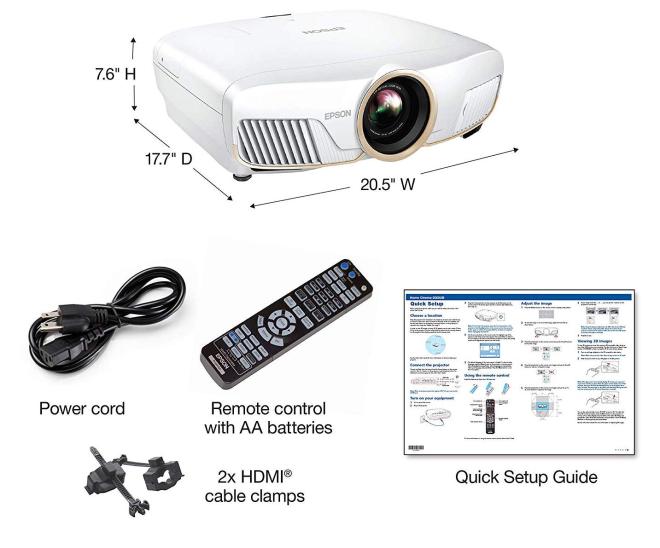
5050UB vs 5040UB, 5050UBe, 6050UB, & 4050UB
For those cross-shopping other Epson models, here's where the 5050UB fits into the current lineup:
The Epson 5050UB (this review) boasts 2600 lumens, up to a 1M:1 contrast ratio can can play 4K/60p content in HDR10 with 100% of the P3 color space. It MSRPs for $3,000, but is currently on sale for $2,800.
The previous-generation 5040UB produces 2500 lumens, the same 1M:1 contrast ratio, and can also do 4K with HDR10 and 100% of the P3 color space, but only up to 24p. It's being phased out, but if you can find one and you don't need 4K/60, it'll cost you between $2,000 and $2,300. It's a good option for those who only watch physical media.
The 5050UBE matches all of the 5050UB's specs, but adds wireless transmission of 4K/24p content in HDR (it might also do 4K/30, but I'm not certain) and costs $200-300 more than the 5050UB. If you don't need 60Hz and want to skip running an HDMI cable, it might be a great fit for you.
The 6050UB is Epson's Pro Cinema version of the 5050. While light output remains at 2600 lumens, contrast jumps to 1.2M:1 while the kit includes an extra lamp, longer warranty, and a darker case. I believe the MSRP is around $4,000, but this projector is only available through Epson's pro installer network.
Lastly, the 4050UB, which debuted last year, boasts 2400 lumens of brightness, a 200,000:1 contrast ratio, and 4K/24p HDR10 playback with 100% of the P3 color space. It MSRPs for around $2,400, which means you should probably scoop up a 5040UB instead while you still can because it's a better projector. I hope Epson replaces the 4050 soon with a 4K/60p capable model around the $2,000 mark. (Epson also offers the 4010 model, but it doesn't do 100% of the P3 color space, so it's hard to recommend.)

SETUP
Setting up an Epson 5050UB Home Cinema projector is easy and intuitive if you're already running a projector. With your screen mounted (or a living room wall emptied and painted white), you can then set the 5050 on a shelf or mount it to your ceiling, connect your HDMI cable, and turn it on.
If this is your first projector, you'll have to find a way to run power and an HDMI cable to the projector. That's honestly the most challenging part, and may require professional help.
For the HDMI cable itself, make sure you have a new High Speed rated cable or you will have HDMI handshake and dropout issues which, with HDCP 2.2 needed to make everything work, could shut you down pretty quickly.
Assuming your projector is in place, connected, and on, press the Lens button on the Epson remote to zoom, shift, and focus your image until the test screen is crisp. If you have a 2.39:1 aspect ratio screen, you can also use the Memory button functions to set your zoom distances for 2.39:1 & 16:9 content.
From there, I typically dive into the Epson Menu system to turn off motion interpolation, set AutoIris to High (for best contrast ratio), do any sort of calibration. That said, if you're planning to calibrate, let the projector break in first before making any permanent changes. You can also set the projector's lamp brightness (High, Normal, ECO), with High offering the most performance at a cost of room noise, heat, and lamp life.
If you're getting lots of ringing (aliasing) or lower quality footage looks chunky, check out the Image Enh(ancment) button, which is a digital sharpening tool. I prefer 3 or below as 4 and 5 are too artificially sharp and introduce errors.
The Epson 5050UB automatically jumps between HDR10 and SDR settings -- HDR10 also includes activating the BT.2020 color space, of which you hit full DCI P3 -- but this jump doesn't adjust the Color Mode, so if you have preferred settings for HDR or SDR content, you'll have to make the change yourself.
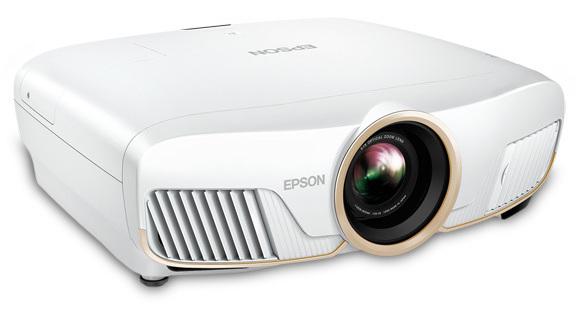
BUILD QUALITY & ERGONOMICS
Epson projectors feel and perform like much pricier projectors. They blend space-age plastics with a tactile back-lit remote, solid metal inputs, a motorized lens and focus system, and big, bright, crispy glass optics. Yes, you can buy cheaper gear -- even cheaper Epsons -- but they don't have glass in league with the Home Cinema 5050UB and its siblings. I've had the pleasure to also spend time with the best Canon, Nikon, Fuji, Olympus, Panasonic, and Sony lenses currently on the market. Great lenses avoid distortion, chromatic aberration, and are sharp edge-to-edge; this Epson projector lens feels right at home.
Also, the Epson 5050UB is the easiest Home Cinema projector to adjust on the fly, which is important because projectors take a little more effort than a TV. Where HDR10 and Dolby Vision 4K TVs tend to have separate modes and settings, the Epson 5050UB keeps Color Modes independent. To put it another way, the Color Mode stays in whatever you're watching even when you jump to/from HDR content.
Similarly, because projectors lack Dolby Vision as well as the dynamic range capabilities of 4K TVs, tone mapping HDR10 becomes a challenge depending on what you're watching, the 5050's current Color Mode, or your room's ambient lighting. Fortunately, Epson places an HDR button on its remote, which allows you to adjust the HDR brightness. The standard setting of 8 works well for very bright movies when you're in a dark room, but you can bump this up toward a maximum setting of 1 for darker movies and more ambient light.
I bring this up for two reasons; as I said, projectors require a little more constant-involvement than a TV, but this is the easiest Epson to tweak thus far.
Despite a few ergonomics upgrades, the Epson 5050UB remains, much like the 5040, a noisy experience in its brightest modes that dumps a ton of heat into your room. You can easily overcome this with louder volumes, good ventilation, and proper projector placement, but the 5050UB is more aurally obtrusive than owning a TV or a DLP projector. Most of the time, it's easy to ignore, unless you're trying to watch something quiet.

4K HDR
I love 4K physical media and streaming because they boast a better compression codec, higher bit rates, more resolution, more vivid colors, and deeper black levels and more highlight details than standard Blu-rays and HD streaming. Though imperfect when compared to the best TVs on the market, the Epson 5050UB reproduces 4K content in a way that makes you feel like you're in a cinema.
From the latest animated movies like Toy Story 4 and Coco to 4K scans of Apocalypse Now, Casino, The Shining, and The Wizard of Oz, to my got-to 4K demo discs like Pacific Rim, Blade Runner 2049, and Dunkirk, the Epson projects a bright, vivid, sharp, and contrasty imagery. While it's sometimes hard to see the resolution variances between standard Blu-ray and 4K UHD Blu on 60" or smaller TVs, everything is much more apparent with a 100" screen. Catalog titles, sourced from film negatives, reveal endless details and a natural grain structure. For modern-era films, you see more details in the brightest region of the screen, sometimes called specular highlights. And the Epson 5050UB is bright enough to blow out portions of the screen if you're not careful (this is important because there's enough dynamic range here for you to set this projector to reveal shadow details while maintaining brightness).
The Epson 5050UB's killer feature -- like the whole 4K format -- is its ability to do 100% of the DCI P3 color gamut, which is what you see projected in commercial cinemas. High-end TVs can hit P3 as well, but a lot of entry-level TVs and cheaper "HDR" projectors reproduces colors that are much closer to the Rec. 709 Blu-ray color space. In my humble opinion, if your display can't do over 90% of DCI P3, you're not fully experiencing Ultra HD content. With this Epson, the colors are simply STUNNING, especially for films and TV shows where the filmmakers push the boundaries.
The only arena where the Epson 5050UB lags behind is black levels. We'll talk about daytime performance in a moment, but even in a fully darkened room, the Epson doesn't produce pure blacks. They're pretty darn good, but even widescreen letterboxing black bars are a (very) dark grey. It's a slight distinction that reminds me of flagship LCD HDTVs from about 10 years ago, but once you've experienced OLED or FALD, it's important to note this imperfect. That said, when you're engrossed in a film or a TV show in a dark room, the contrast, black levels, and overall image quality looks terrific. Even shadowy content like The Haunting of Hill House and Stranger Things 3 look great (although Netflix does seem to have some encoding flaws in the lower letterbox of their widescreen shows that become more obvious with this projector).
Recommended 4K Settings: Epson suggests using Bright Cinema mode for max HDR performance, but I actually disagree unless you're watching movies during the day or with lights on in the room. I personally recommend Digital Cinema color mode, which is the only one capable of hitting 100% of the DCI P3 color space. Then tap the HDR button and, using the brightest scene in that specific movie, set it just under the point where whites clip. (FYI, don't want to use your Digital Cinema HDR setting in Bright Cinema because you'll definitely clip whites.)
Two years ago I wrote my first 4K review and I never looked back. It's the best physical media format in the history of home cinemas. The Epson 5050UB is an excellent 4K HDR option for those who can't quite make the leap to JVC or Sony systems that cost $5,000-7,000 or more.
HD SDR
While 4K content fares the best, I spent a lot of time watching standard Blu-rays, HD streaming, and DirecTV content like cable news, sports, and various TV series. As with any display, there's a garbage-in-garbage-out line you can't cross when it comes to the most compressed content on the market (cable companies honestly need to catch up with streamers in this regard), but much of this comes down to whether or not your Detail Enhancer is set too high. Too much digital sharpening makes low-res content blockier.
That said, and even though even HD Blu-rays aren't quite as sharp or stunning as their 4K counterparts, HD performance is also quite good. From children's programming like Peppa Pig and Seasame Street, to Sunday Night Football, to HBO's Watchmen, to revisiting Blu-rays like Beauty and the Beast, Unstoppable, and Double Indemnity, the Epson 5050UB projects a clean, stable, image with good colors and contrast. It's less eye-popping than the 4K HDR experience, but it's still very cinematic overall.
Recommended HD SDR Settings: With standard dynamic range and Rec. 709 colors, it's much less important to control the light in your room. You can enjoy TV in Bright Cinema (or Dynamic in a pinch) with the lights on and still experience reasonably good picture quality. There's nothing like watching your favorite sports team in 100+ inches and thanks to 2600 lumens of output. For the most accurate experience, I suggest turning off all of your lights and selecting Cinema color mode, which drops fan speed and improves black levels.

3D
While 3D TVs are officially dead, Epson still offers full 1080p-per-eye stereo 3D if you purchase its optional active RF 3D glasses. Epson charges $100/pair for them, but 3D Heaven sells a compatible 4-pack for $130 on Amazon.
If you don't like 3D movies, or active 3D glasses, I don't think this projector will change your feelings. But if you were so-so on 3D or already enjoy stereo content, be prepared to be blown away because the Epson 5050UB 3D experience (much like the 6040 and 5040 before), is the best I've ever had in the home. First, the 3D effect darkens the image just a touch, which actually perfect's the contrast. Second, depth and dimensionality are excellent. It's like cutting a 100" hole in your living room wall and looking out into a parallel universe.
I tested my favorite 3D films -- Mad Max: Fury Road, Pacific Rim, Avatar, Gravity, and The Great Gatsby -- and was simply blown away by the immersion and clarity of each experience. The only drawback is the lack of DCI P3 colors; Rec. 709 is a step down even though 3D movies look excellent otherwise. (This is particularly noticeable on Fury Road and Gatsby).
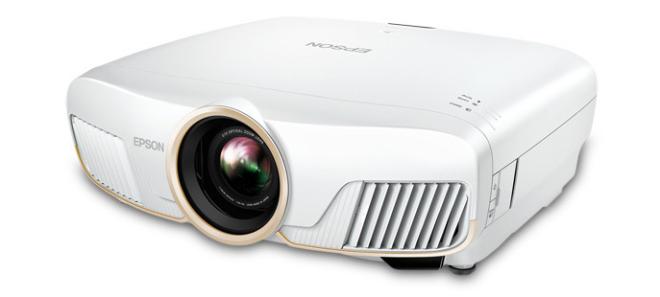
FINAL THOUGHTS
Pros
- Sharp detailed picture
- Brilliant colors
- Excellent 3D dimensionality
- Bright enough to watch during the day
- Easy setup & HDR adjustments
- Above-average optics
Cons
- Pricing seems a few hundred dollars too high
- Black levels aren't as good as 4K TVs
- Not true Ultra HD resolution
- HDR viewing requires more tweaking than a 4K TV
- Loud fan
- Bulb life will be limited when cranking up for max performance
While the Epson Home Cinema 5050UB 4K PRO-UHD Projector may not be a true 4K projector and you can purchase a flagship quality 4K TV with better image quality for a similar MSRP, this is the best projector you can buy for less than $3,000. With HDR10 compatibility, full P3 color space reproduction, and 3D playback, the Epson Home Cinema 5050UB is a movie lover's dream machine, producing sharp imagery with bold colors and generally pleasing black levels. To get the most out of this projector, make sure to watch in a fully darkened environment and be ready to adjust settings to individual productions, but it's also bright enough to casually enjoy TV and movies with the lights on.
In short, I adore the Epson 5050UB and just wish it was priced more aggressively. Still, to get a better projector, you'll have to spend at least $2,000-$3,000 MORE, so I can't quite say the 5050UB isn't a value at its current $3,000 MSRP (and I've seen it on sale for $2,800).
So it all comes down to this: what's more important for you? Image quality or immersion.
You can snag a 75" Vizio P-Series Quantum for around $2,200 and it'll be brighter with better black levels, or a 65" LG OLED for around $2,500, and it'll have perfect black levels. Those options include Dolby Vision as well. Or you can be overwhelmed by 100-plus inches with the Epson, which features 3D as well as terrific colors but imperfect black levels. It's really about what's most important to you.
Either way, the Epson 5050UB is Highly Recommended for anyone who wants a 4K HDR projector, but who doesn't have the budget for the higher end JVC and Sony models.







